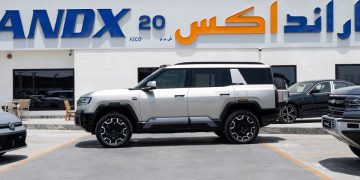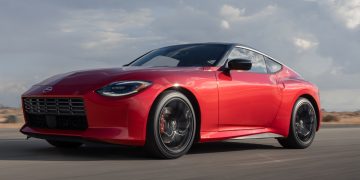Introduction: The Evolution of the Automobile and the Rise of Electric Vehicles
The automotive industry has undergone dramatic changes over the past century, with the transition from steam-powered and horse-drawn vehicles to gasoline-powered engines. Today, the world stands at a critical juncture as electric vehicles (EVs) emerge as an alternative to traditional gasoline cars. The increasing awareness of climate change, fuel efficiency, and the need for sustainable transportation solutions has made electric cars a key focus of future mobility discussions. But the question remains: which type of vehicle, electric or gasoline-powered, is better suited for the future of transportation?
This article will explore the key differences between electric vehicles and traditional gasoline cars, examining their advantages, challenges, and overall alignment with future transportation trends.
1. Understanding the Basics: What Defines Electric and Gasoline Vehicles?
A. Electric Vehicles (EVs)
- Definition: Vehicles powered entirely by electric motors using electricity stored in batteries.
- Key Components:
- Battery: Lithium-ion or solid-state batteries that store energy.
- Electric Motor: Converts electrical energy into mechanical energy.
- Charging Infrastructure: Home chargers, public charging stations, and fast chargers.
- Charging vs. Fueling: How EVs are charged (at home or public stations) compared to fueling a traditional car with gasoline or diesel.
B. Traditional Gasoline-Powered Cars
- Definition: Vehicles powered by internal combustion engines (ICE) that burn gasoline or diesel to produce power.
- Key Components:
- Engine: Internal combustion engine that burns fuel to generate power.
- Fuel Tank: Holds gasoline or diesel for combustion.
- Exhaust System: Releases emissions into the atmosphere.
- Fueling Infrastructure: Availability of gas stations and the convenience of refueling.
2. Environmental Impact: Which Is More Sustainable for the Future?
A. Electric Vehicles and the Environment
- Reduction in Carbon Emissions:
- EVs produce zero tailpipe emissions, reducing air pollution.
- Comparison of the lifecycle emissions of EVs vs. gasoline vehicles.
- Energy Source:
- The importance of the electricity grid: How the source of electricity (renewable vs. non-renewable) affects the environmental impact of EVs.
- Transitioning to clean energy and the potential of solar, wind, and hydroelectric power.
- Battery Production and Disposal:
- Environmental concerns related to the mining and processing of raw materials for batteries (lithium, cobalt, nickel).
- Recycling challenges and innovations in battery recycling technologies.
B. Gasoline Vehicles and Their Environmental Impact
- Pollution and Greenhouse Gas Emissions:
- Direct emissions from gasoline combustion contributing to global warming and poor air quality.
- The long-term impact of widespread gasoline car use on the environment.
- Fuel Efficiency:
- Technological advancements in internal combustion engines to improve fuel economy (e.g., turbocharging, hybridization).
- The limitations of gasoline cars in meeting future emissions standards.
3. Technological Advancements: Comparing the Two Technologies
A. Technological Developments in Electric Vehicles
- Battery Advancements: Lithium-ion batteries vs. solid-state batteries and their potential to improve EV performance, range, and cost.
- Range and Charging:
- Improvement in the driving range of electric vehicles, with some models now exceeding 300 miles per charge.
- The development of ultra-fast charging stations and the quest for battery charging times comparable to refueling a gasoline vehicle.
- Autonomous Driving Integration: Many EVs are at the forefront of autonomous driving technology, with manufacturers like Tesla leading the way.
- Smart Technology and Connectivity: How EVs are increasingly integrated with smart technologies (over-the-air updates, vehicle-to-grid systems, and advanced driver-assist systems).
B. Technological Advances in Gasoline Vehicles
- Hybrid and Plug-in Hybrid Vehicles:
- Integration of hybrid powertrains to improve fuel efficiency and reduce emissions.
- The role of plug-in hybrids in the transition to fully electric vehicles.
- Internal Combustion Engine Efficiency: Technological improvements in traditional engines (e.g., turbocharging, direct injection) to maximize fuel efficiency and lower emissions.
- Driver Assistance and Connectivity: The inclusion of features such as adaptive cruise control, lane-keeping assist, and infotainment systems in modern gasoline cars.

4. Performance and Driving Experience: What Do Consumers Prefer?
A. Electric Vehicle Performance
- Instant Torque and Smooth Driving Experience:
- How EVs provide an instantaneous torque output for rapid acceleration.
- The quietness of electric motors compared to the noise and vibration of traditional engines.
- Driving Dynamics:
- The low center of gravity in EVs due to battery placement and its impact on handling.
- Differences in driving experiences between EVs and gasoline cars, particularly in terms of acceleration and ride quality.
- Range Anxiety: The concerns about battery life and the availability of charging stations, particularly for long-distance travel.
B. Gasoline Vehicle Performance
- Engine Power and Range: Traditional vehicles typically offer more flexibility in range with faster refueling times.
- Driving Experience:
- The tactile feedback of driving a gasoline-powered car, including engine sounds, throttle response, and gear shifts.
- The variety of models available in terms of performance, from fuel-efficient sedans to powerful sports cars and trucks.
- Refueling Convenience: Gasoline cars offer quick refueling at millions of stations worldwide, reducing downtime compared to electric vehicle charging.
5. Cost Considerations: Which Vehicle Offers Better Value?
A. Cost of Ownership for Electric Vehicles
- Upfront Cost:
- The initial higher purchase price of electric vehicles due to expensive battery technology.
- Incentives and rebates offered by governments to promote the adoption of EVs (e.g., tax credits, grants).
- Running Costs:
- Lower operating costs, including fuel (electricity is generally cheaper than gasoline) and maintenance (fewer moving parts in EVs, no oil changes).
- The impact of battery life and the cost of replacing or maintaining the battery.
- Resale Value:
- The resale value of EVs compared to traditional vehicles as the market evolves.
- Depreciation trends in electric vehicle markets and the influence of battery technology.
B. Cost of Ownership for Gasoline Vehicles
- Initial Cost:
- Gasoline vehicles tend to have a lower upfront cost compared to EVs, especially when considering less expensive models.
- Fuel and Maintenance:
- Higher long-term costs for fuel and maintenance compared to EVs.
- Ongoing expenses like oil changes, brake replacement, and more complex engine repairs.
- Resale Value:
- The steady resale value of gasoline vehicles, especially for well-maintained, popular models.
6. Infrastructure and Adoption: Which Vehicle is More Practical for the Future?
A. Electric Vehicle Infrastructure
- Charging Networks: The expansion of public and private EV charging stations and their role in promoting EV adoption.
- Home Charging: The convenience of charging at home using a standard electric outlet or dedicated EV charger.
- Global Adaptation: Variations in infrastructure development across different countries (e.g., developed countries vs. developing countries).
- Public Support: Government incentives to build charging stations, promote clean energy, and encourage EV adoption.
B. Gasoline Vehicle Infrastructure
- Fueling Stations: The established network of millions of gas stations worldwide, making refueling quick and convenient.
- Global Adaptation: Gasoline vehicles are well-suited for regions with less-developed infrastructure or where electricity grids are unreliable.
- Maintenance Facilities: The widespread availability of service centers and mechanics for gasoline-powered cars.
7. The Future of Mobility: Which Vehicle is More Aligned with Tomorrow’s Needs?
A. Electric Vehicles and Sustainable Mobility
- Government Regulations and Climate Goals: How governments around the world are pushing for more sustainable transportation options through stricter emissions regulations.
- EVs and Urbanization: The potential role of EVs in reducing urban air pollution and enhancing the quality of life in growing cities.
- Future Trends:
- The rise of shared mobility and autonomous driving, which could be dominated by electric vehicles due to their efficiency and environmental friendliness.
B. Gasoline Vehicles and Future Adaptations
- Hybridization: The potential role of hybrid vehicles as a bridge technology between gasoline cars and fully electric vehicles.
- Internal Combustion Engine Innovations: The development of biofuels and synthetic fuels that could make gasoline-powered vehicles more environmentally friendly.
- Fuel Efficiency: Continued improvement in the fuel efficiency of gasoline vehicles to comply with future emissions regulations.
Conclusion: What’s Next for the Future of Mobility?
Both electric vehicles and gasoline cars have their respective strengths and challenges, and the answer to which is more aligned with the future of mobility depends largely on the context. However, the rise of electric vehicles, driven by environmental concerns, technological advancements, and changing consumer preferences, signals a significant shift toward a cleaner and more sustainable transportation system.
As the adoption of EVs grows, coupled with innovations in charging infrastructure, battery technology, and autonomous driving, electric vehicles seem to be the natural evolution of the automobile industry. Nonetheless, gasoline vehicles will likely continue to play a role for years to come, especially in regions with limited EV infrastructure or in specific use cases where traditional vehicles are still needed.
The future of mobility is not about choosing one over the other but about finding the right balance between innovation, sustainability, and practicality. In the end, both technologies are evolving, and together, they will shape how we move toward a greener, smarter, and more connected world.


































Discussion about this post